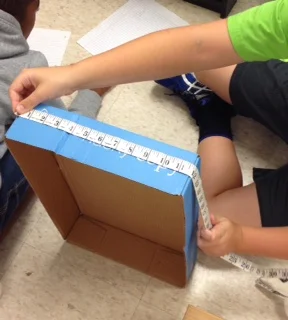I've trained my students to play Scoot and we love it!
If you're new to the game, here it is in a nutshell: You need a set of cards with one problem or task on each one. The cards should be numbered (1,2,3,...) and you need one for each child.
Decide how you want students to move from desk to desk, that is, the traffic pattern. Place a card on each child's desk, according to your traffic pattern.
Each student prepares a sheet of paper numbered like the cards (1,2,3,...).
When all is ready, have students push under their chairs and stand behind them.
You say, "Go", and students solve the problem or do the task that is one their own desk. They write the answer on their paper at the correct number.
When you feel they've had enough time, say, "Scoot!" and students move to the next desk. Again, give them just enough time to solve the problem, then say, "Scoot!"
Continue until each student is back at his/her own desk. The game is over.
Scoot can be used as a fun, movement-filled review activity or as an assessment. Consider putting up cardboard privacy screens to keep eyes from wandering. After all, the students are standing and can see better. Once it's over, you can share and score their answers.
Other Scoot games are just for movement and can be used as a Brain Break or an indoor PE activity. Here's my latest one and it's free for you here
Brain Break Scoot! Freebie
I recently wanted to play Scoot to practice simplifying exponents on our calculators. It was a last minute idea - many of mine are! - and I didn't have time to prepare the cards. Flying by the seat of my pants, I told students to take out their slates and markers. They were to write a factor form 1 to 10 in the middle of their slate and give it an exponent from 1 to 6. I quickly walked around and number the slates.
It worked! Students left their calculators on their desks and cleared them each time I said, "Scoot!" I'll be making a Scoot game for exponent soon!
Do you play Scoot? Are you interested in trying it out? Let me know how you use it in your classroom and about your successes.


.jpg)









.jpg)
.jpg)













